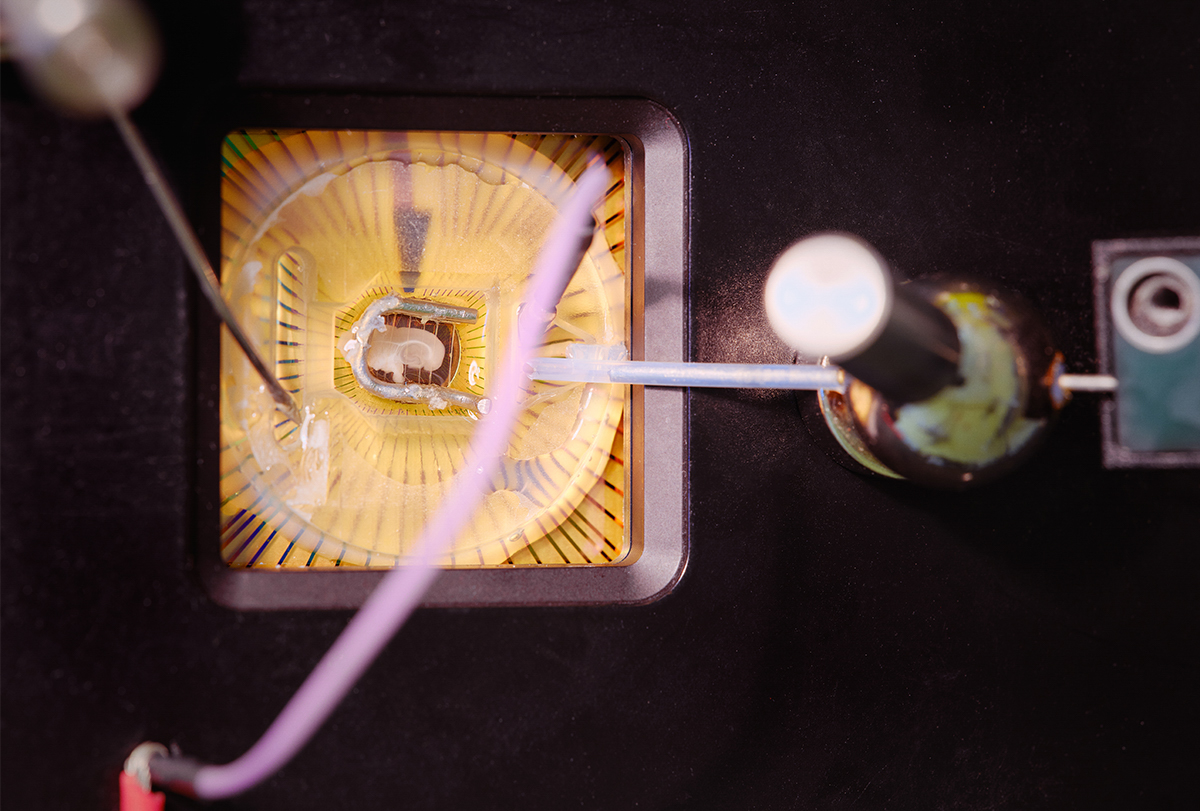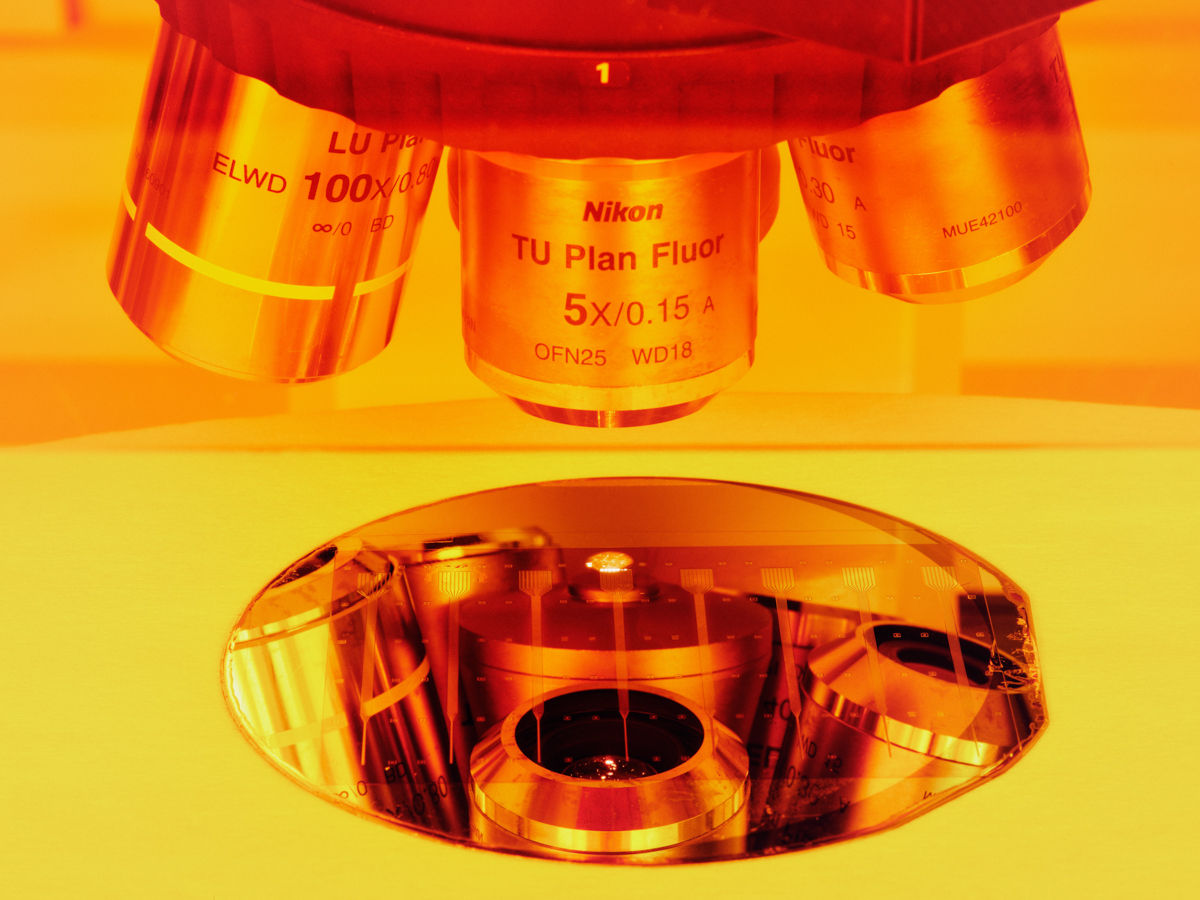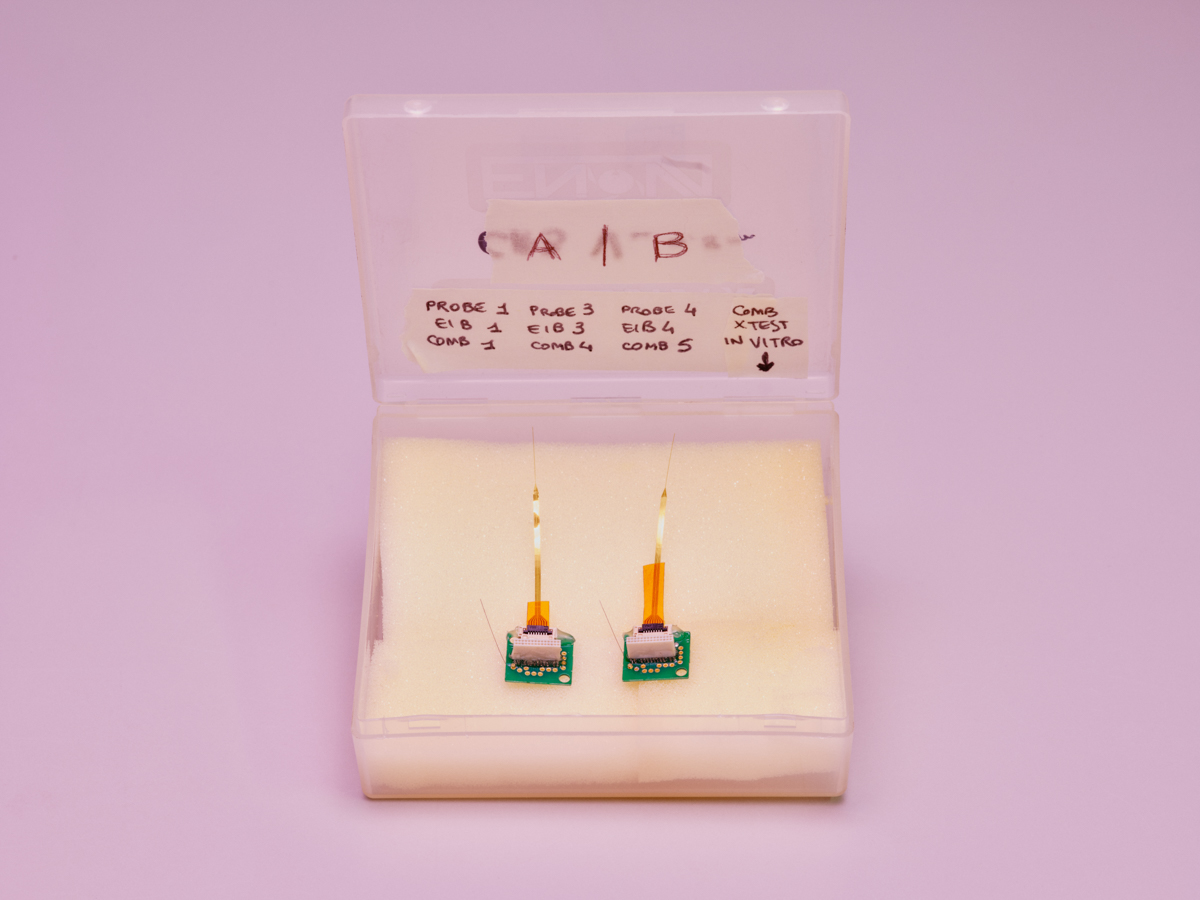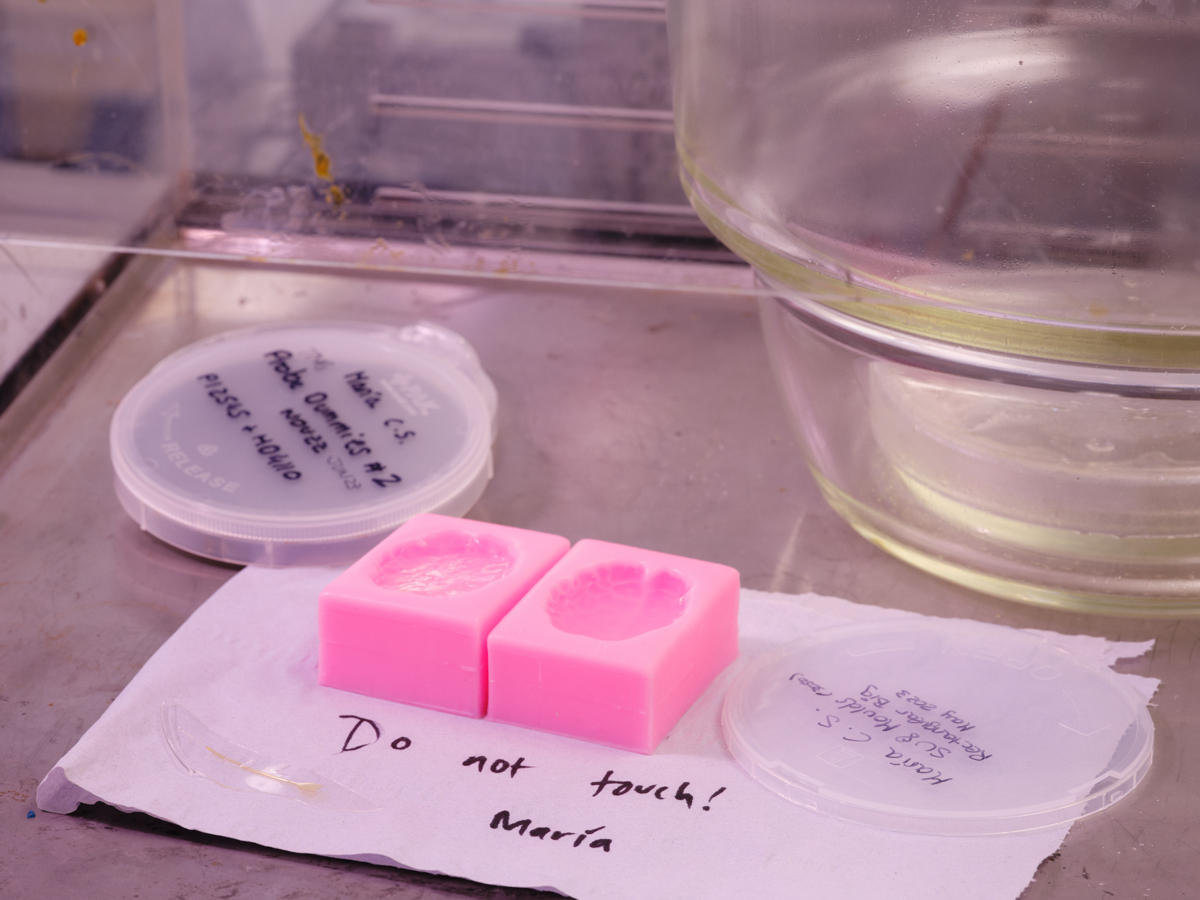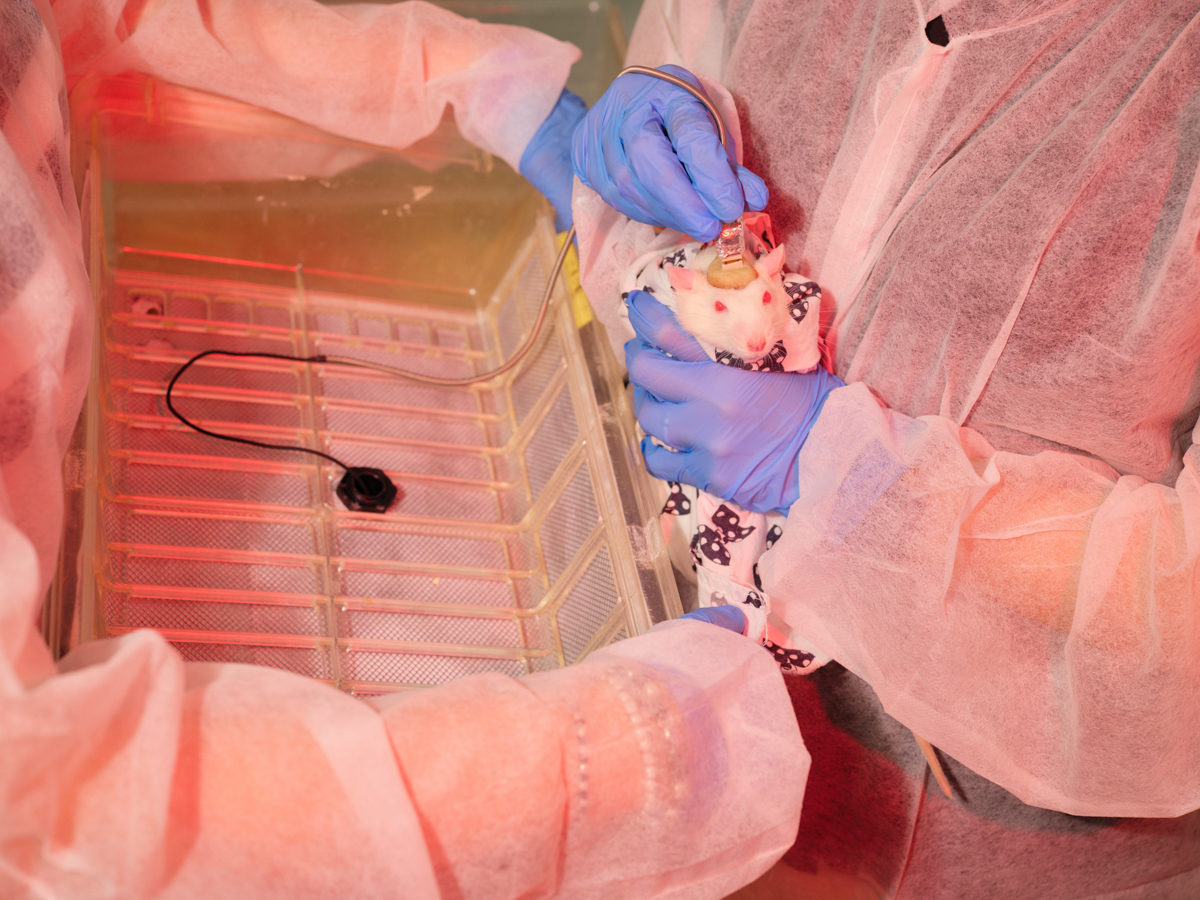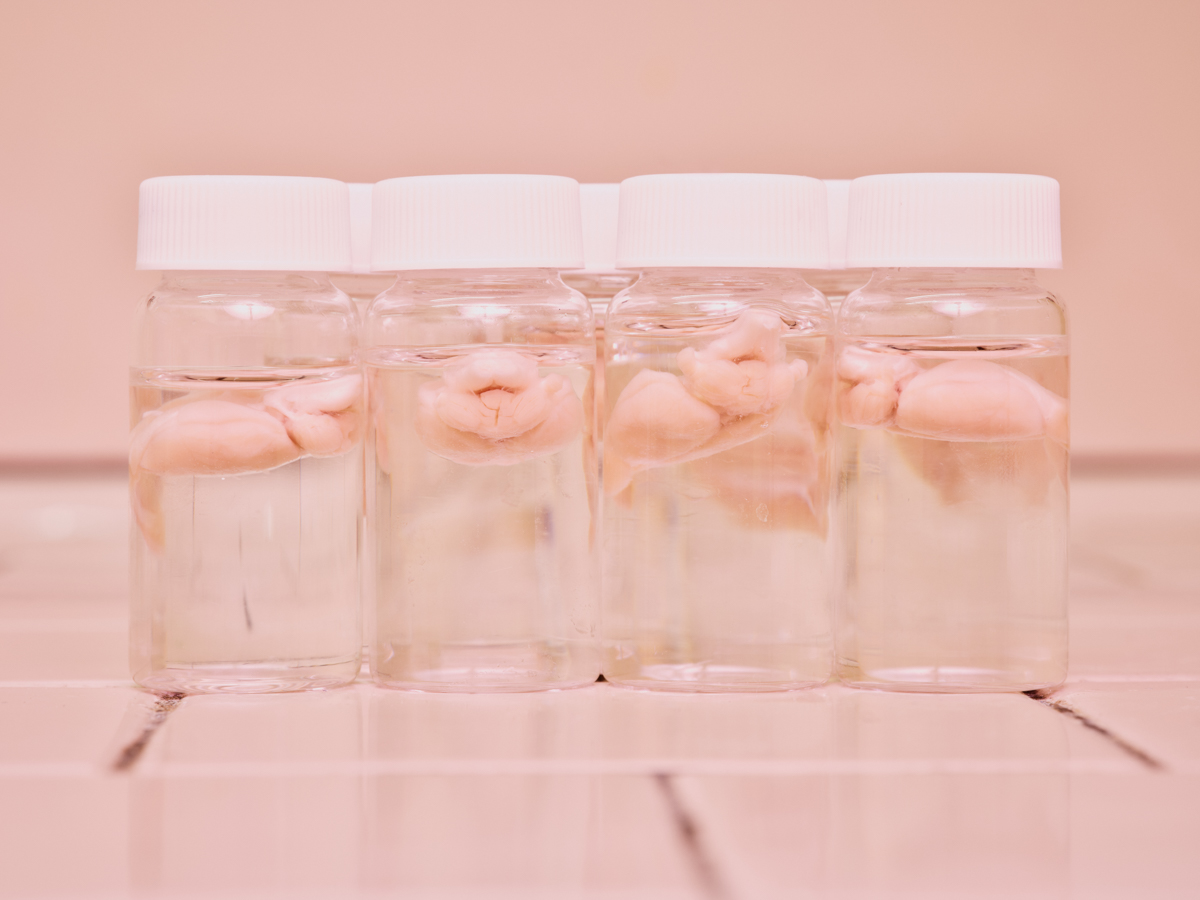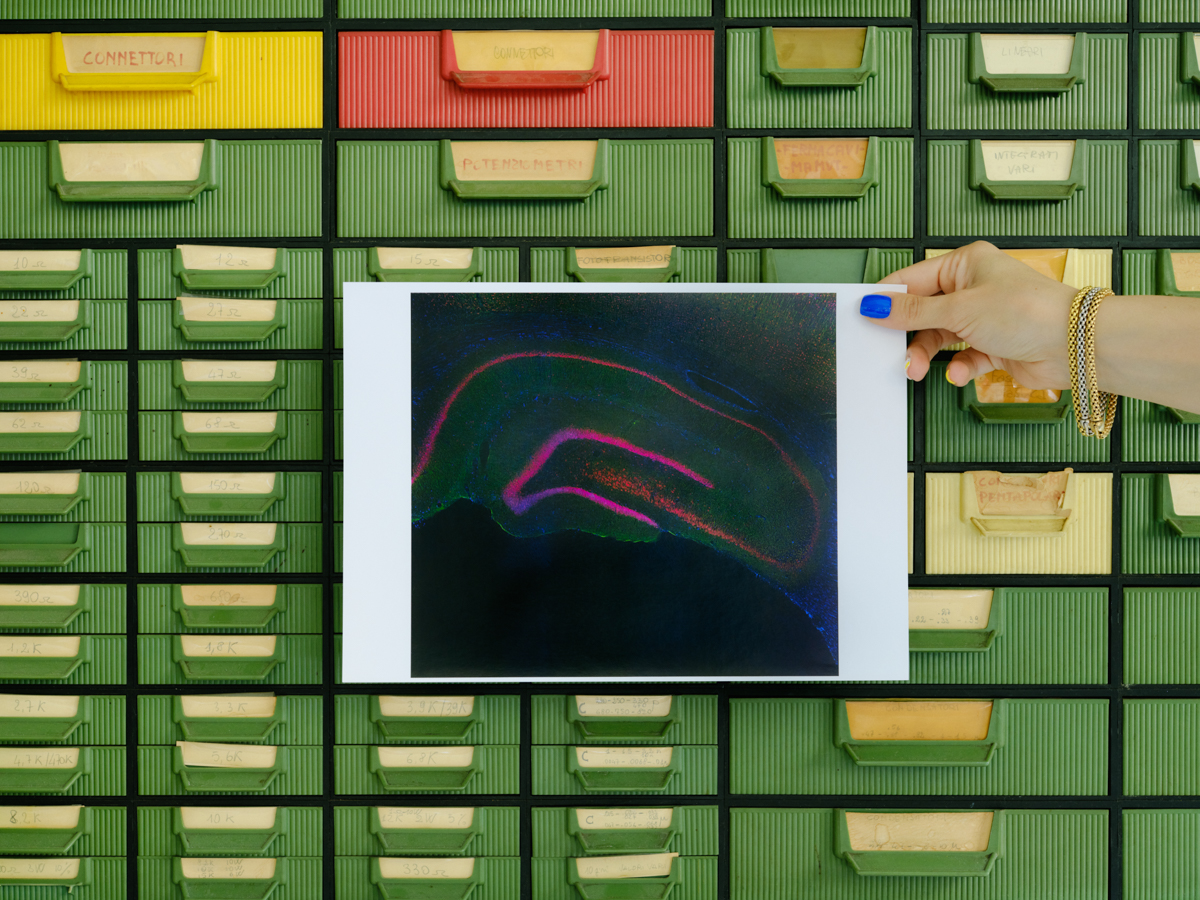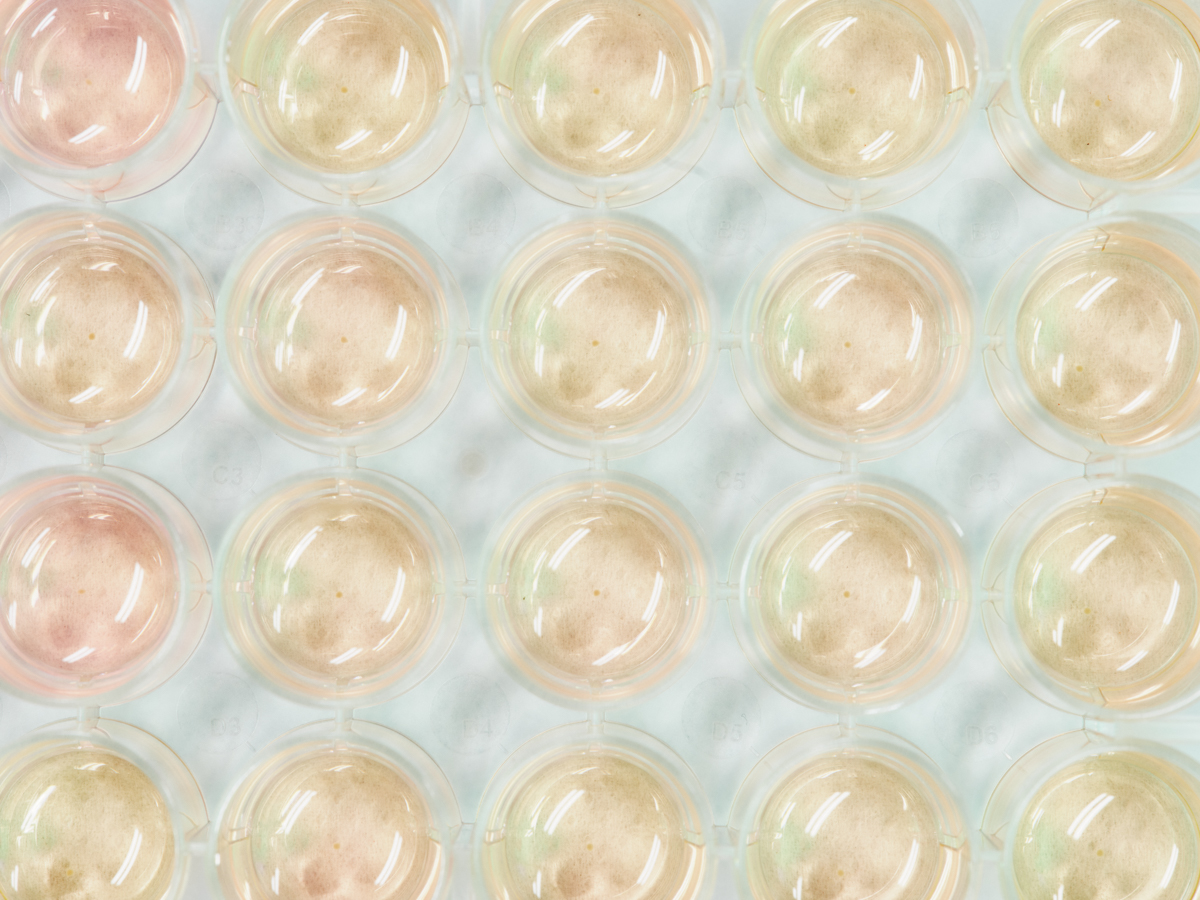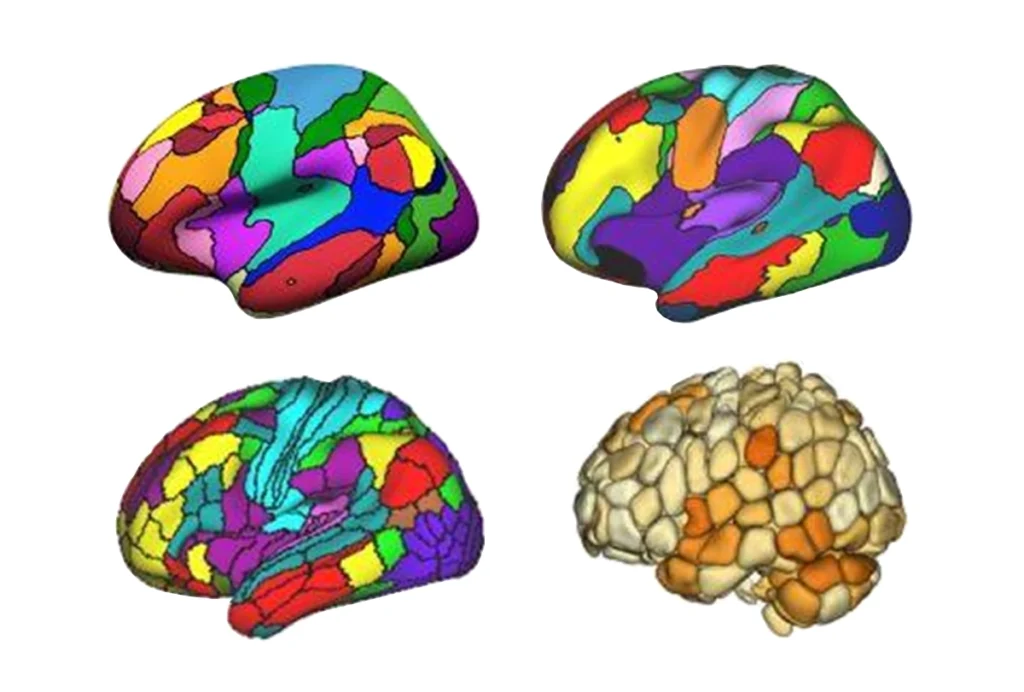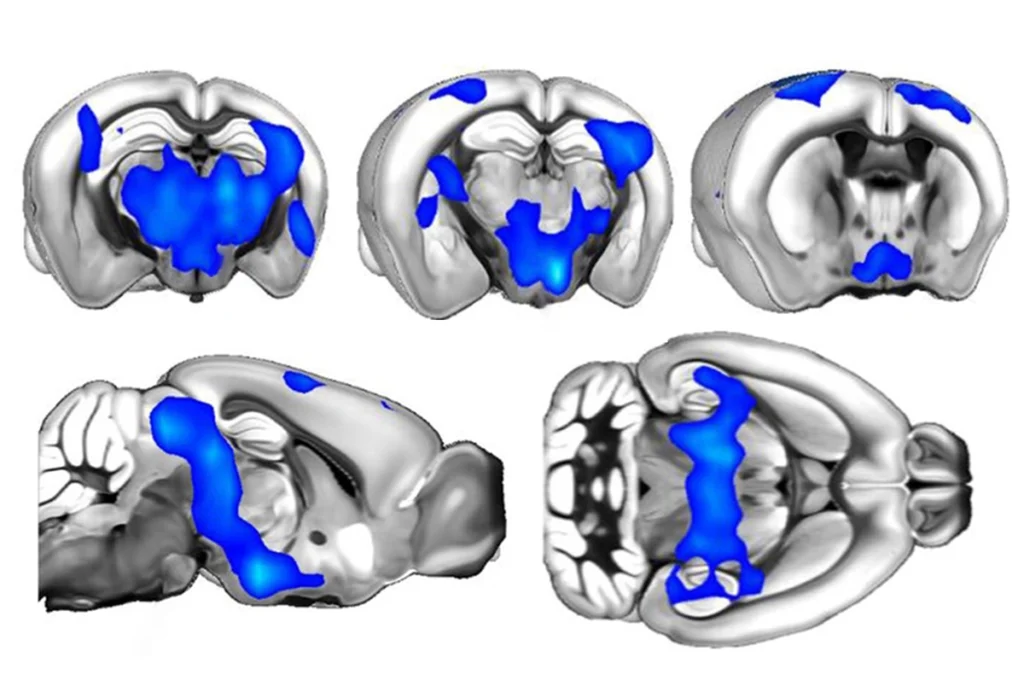A coalition of 12 labs across seven European countries has set itself an ambitious, almost science-fiction-sounding agenda: The scientists behind a project called HERMES — short for Hybrid Enhanced Regenerative Medicine Systems — are working to engineer next-generation neural probes and artificial-intelligence-powered organoid-microelectronic implants to restore and reshape brain tissue damaged by epileptic seizures.
About five years into the effort, HERMES labs are testing their proof-of-concept creations. Emile Holba, a U.K.-based photographer, visited nanoelectronics engineer Hadi Heidari at the University of Glasgow, neuroscientist Gulia Curia at the University of Modena, and biophysicist Gabriella Panuccio at the Italian Institute of Technology (IIT) to photograph their output, shown below.
“Our dream,” Panuccio says, “is that we will be able, one day, to heal brain damage by means of tissue transplants, a reality that is only possible to date for other organs of the human body, like the skin.”
